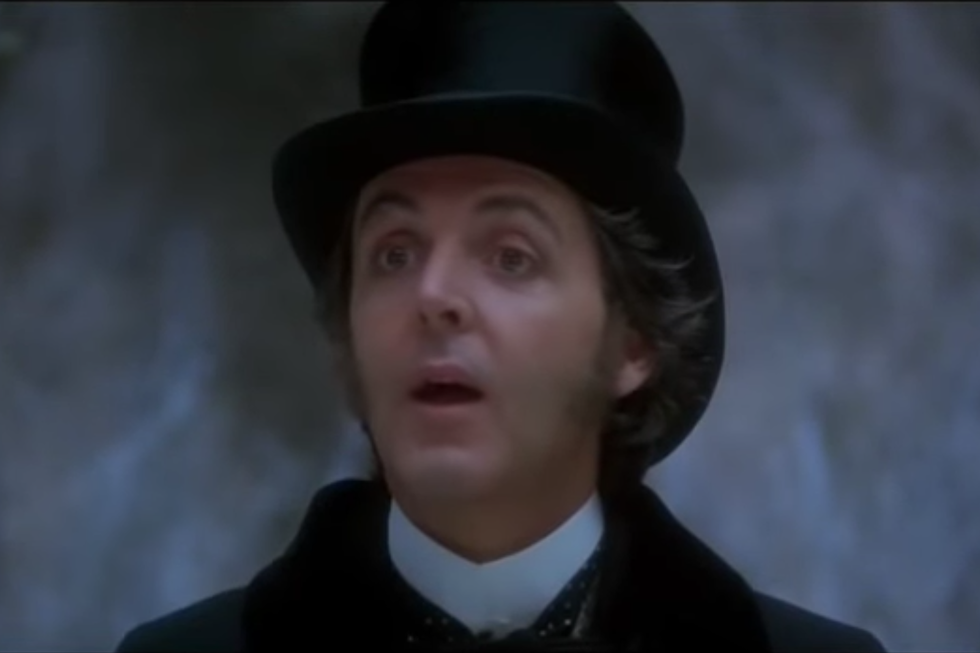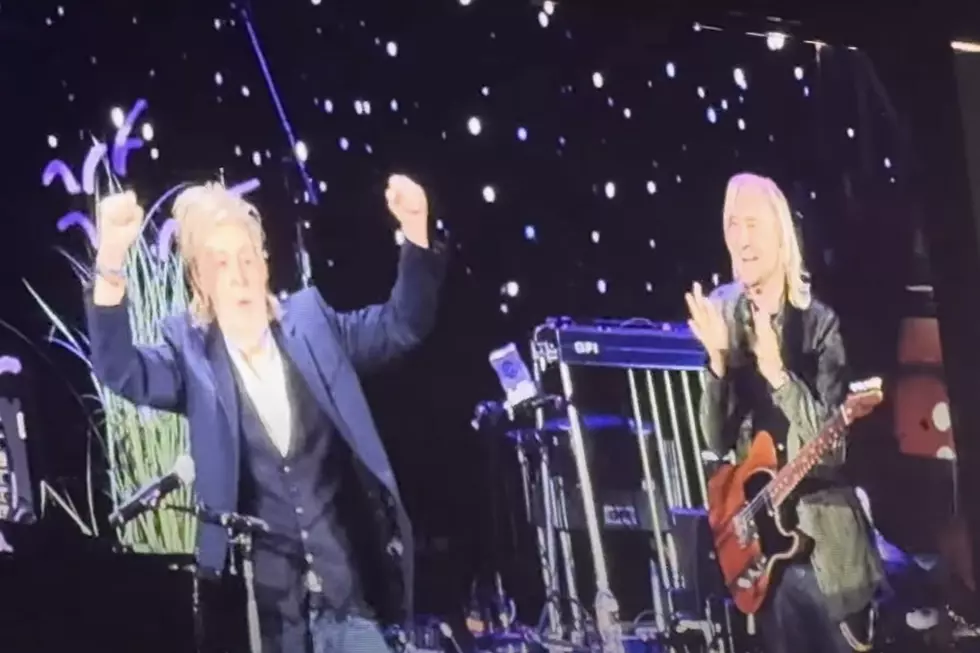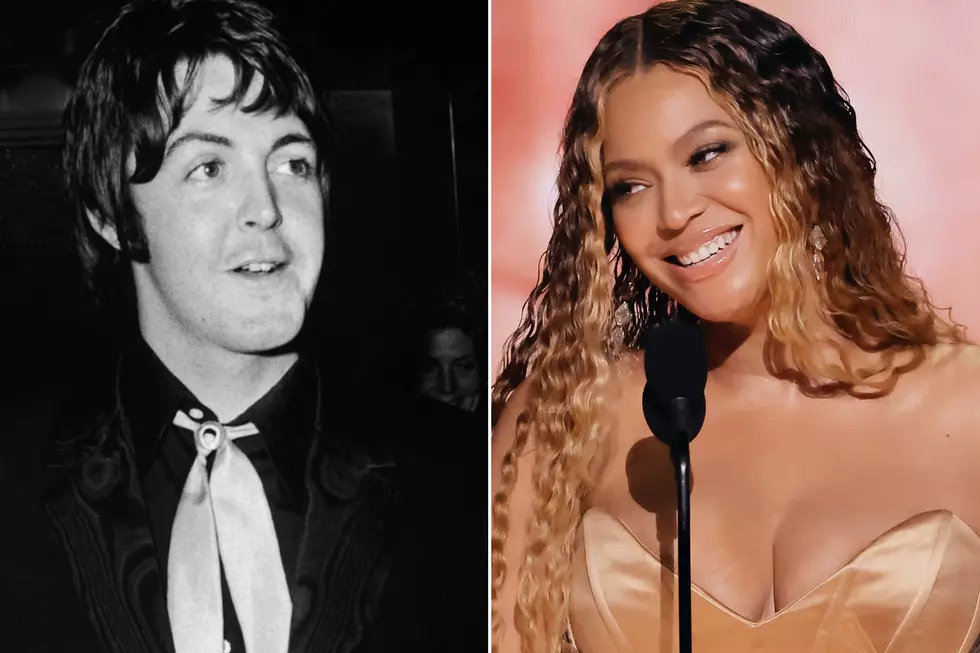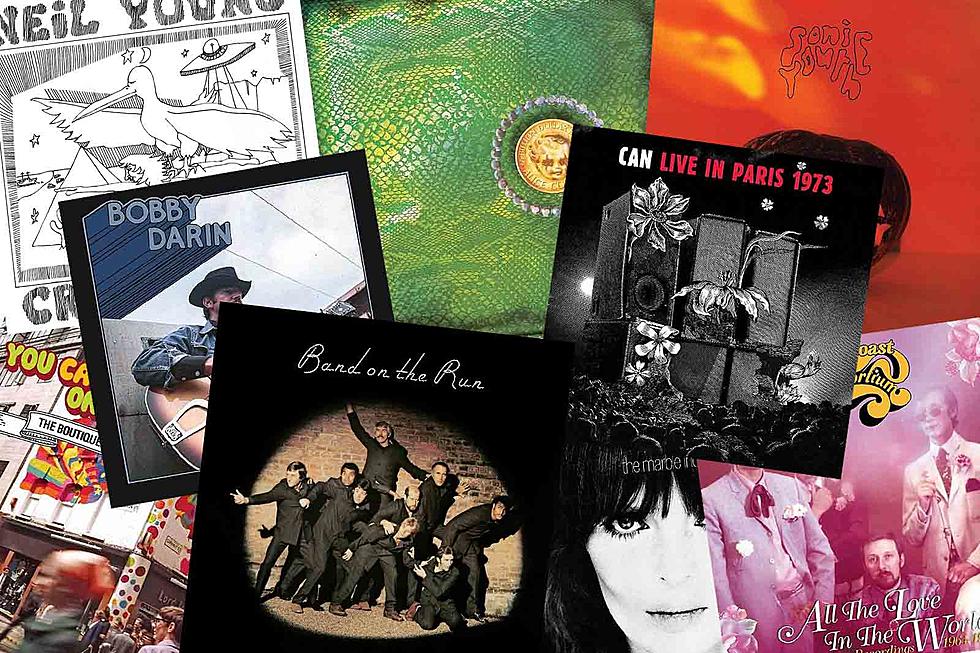
Why Paul McCartney Stumbled With ‘Give My Regards’ Film
Paul McCartney's first solo movie project became his last, after Give My Regards to Broad Street became a critical and box-office disaster.
Released on Oct. 23, 1984, the film reunited McCartney with Beatles-era collaborators Ringo Starr and George Martin, but couldn't approximate the fizzy excitement of A Hard Day's Night – or even the shambolic but occasionally charming Magical Mystery Tour.
Roger Ebert, the esteemed movie critic, praised the soundtrack but admitted he couldn't make sense of the McCartney-written script – adding that it was "to put it charitably, idiotic." Even the Beatles Bible, typically a safe space, describes Give My Regards to Broad Street as "ill-conceived."
McCartney starred as himself in a plot that recounts the search to find missing session tapes for a new album as a label-imposed deadline looms. It's loosely based on an actual incident when Sex Pistols lost the master for Never Mind the Bollocks back in the '70s, except with none of that group's chaotic originality.
Instead, McCartney muddles through a rock star's everyday life, interspersing it all with disjointed dream sequences that serve as platforms for the music. Even Starr's patented drollness couldn't save this one. "For some reason, he got the idea it was like a Beatles film," McCartney said in Ringo: With a Little Help. "Well, we'd had a few drinks."
The entire thing plays like that, actually – as if McCartney cooked this up on a cocktail napkin. And he kinda did. "I didn't know anything about writing a screenplay, of course, but I just thought I'd try, and I got my pads and pencils and worked on it at odd moments over a year's time," McCartney told Ebert in 1984. That included one day when he was stuck in a traffic jam.
"I started scribbling and filled up something like 25 sheets of paper with ideas for a screenplay," McCartney told The New York Times in 1984. "At the time, I was commuting from the country into London to record, two hours each way, and I used those four hours a day to work on what eventually became Give My Regards to Broad Street."
Starr wasn't the only cast member whose obvious talents were wasted. British theater legend Ralph Richardson, in one of his last roles, steals every scene as a father-figure pub owner. "He is the only one who comes close to portraying a character in the normal sense of the word," the Associated Press sniffed in 1984.
Bryan Brown (Cocktail, Gorillas in the Mist, Along Came Polly), Jeremy Child (A Fish Called Wanda, The Madness of King George, Darkest Hour) and Starr's wife Barbara Bach (The Spy Who Loved Me, Force 10 From Navarone) rounded out the cast. But McCartney, despite his obvious love of the film-making process, hadn't provided them with nearly enough to work with.
"I've been trying to make a movie for a while," McCartney told the Oklahoman in 1984. "Just 'cause I like the sort of ambiance of movies, the idea of being in them. A lot of people wanna be in movies, you know, and I'm no different."
Watch Roger Ebert Review 'Give My Regards to Broad Street'
Maybe that was the problem: McCartney's hardwired romanticism about the life of an actor created a blind spot. This tendency actually went back to the mop-top days.
"He loved the theater. He loved show business, as it were, in a way that the other three really didn't care," director Richard Lester, who was behind the cameras for two Beatles movies, said in a DVD extra for A Hard Day's Night. "I think this was a disadvantage to him. ... I think if he had been less enamored with the trappings of cinema and the theater, he might have been a bit more relaxed."
Constructed in fits and starts over 28 nonconsecutive weeks between November 1982 and June 1984, Give My Regards to Broad Street was initially conceived as a made-for-TV project – much like the Beatles' Let It Be, which at this point was McCartney's most recent film. Willy Russell and then Tom Stoppard initially worked on the script before McCartney decided to take over.
Somewhere along the way, he also elected to combine a few new songs – including the Top 10 ballad "No More Lonely Nights" – with a soundtrack dominated by senseless remakes of Beatles and solo tunes. "I know some fans will dislike the idea," McCartney admitted in a 1984 talk with Jam Magazine, "but they are great songs. Does that mean I can't ever sing them again?"
At one point, he's joined by members of Toto in a deeply weird scene where everyone appears as some sort of alien feline creatures while performing a redo of "Silly Love Songs." "We didn't know we were going to wear all of that makeup and shit, which was pretty funny," Toto's Steve Lukather said in 2014. "Then we realized he was doing it too. So, if it was good enough for Paul McCartney, it was good enough for us. We kept telling everybody, 'Hey, we're in the new McCartney movie.' And it comes out and we're unrecognizable!"
Director Peter Webb also wanted to include a new take on "Hey Jude," McCartney told the Times, but those plans were ultimately scrapped. "I was quite up for it," McCartney added, "but Ringo said, 'No, I've already done that one.'"
A few scenes stand out: McCartney is seen in a futuristic custom-designed car that's equipped – imagine this! – with a computer that reminds him of daily calendar items. The Victorian fantasy sequence he constructed around "Eleanor Rigby" is note-perfect. But the rest just collapses in a heap of episodic confusion.
As the scope of this debacle became clear, McCartney began to backpedal. "I don't make any sort of great claims of Broad Street as a great Shakespearean effort," he told Jam Magazine. But the damage was done – both at the box office and to McCartney's dream of movie stardom.
Other than a memorable cameo in 2017's Pirates of the Caribbean: Dead Men Tell No Tales, McCartney has never been in another movie.
Beatles Solo Albums Ranked
See Paul McCartney in Rock’s Craziest Conspiracy Theories
More From Ultimate Classic Rock









